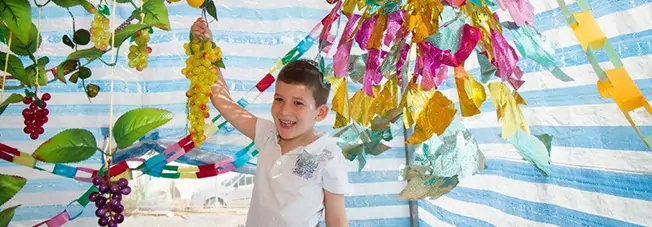
The Jewish Festival of Booths, known in Hebrew as Sukkot and sometimes called the Feast of Tabernacles, is one of the most vibrant and joyous celebrations in the Jewish calendar. It is also one of the three pilgrimage festivals commanded in the Bible, when ancient Israelites would journey to Jerusalem to worship and give thanks.
In the book of Leviticus, God commands Moses:
“On the first day you shall take the product of hadar trees, branches of palm trees, boughs of leafy trees, and willows of the brook…” (Leviticus 23:40)
“You shall live in booths seven days; all citizens in Israel shall live in booths, in order that future generations may know that I made the Israelite people live in booths when I brought them out of the land of Egypt.” (Leviticus 23:42–43)
These verses form the foundation of Sukkot’s rich symbolism. The temporary shelters, or sukkahs, recall the fragile dwellings the Israelites built during their forty years of wandering in the Sinai wilderness — a time when they relied entirely on divine protection and providence.
Today, Jews in Israel and around the world keep this ancient commandment by constructing sukkahs — outdoor huts that serve as both spiritual reminders and festive gathering places. Families eat, pray, and often sleep in them for the seven days of the festival, celebrating under roofs of leaves and branches that open just enough to glimpse the stars.
Building a sukkah is guided by detailed religious laws. To be considered kosher (fit for use), a sukkah must have at least three walls, sturdy enough to withstand an ordinary wind. Its roof, called sechach, must be made from natural materials — such as bamboo poles, palm fronds, or evergreen branches — that have been detached from the ground. The covering must provide more shade than sunlight at midday, yet remain thin enough to see patches of sky through it.
Many communities transform their sukkahs into works of art and joy. Families adorn the walls and ceiling with colorful decorations, paper chains, and fruits — both real and symbolic. It’s common to hang representations of the Seven Species praised in the Bible (wheat, barley, grapes, figs, pomegranates, olives, and dates), as well as the etrog (citron) and lulav (palm branch), which are waved together in daily rituals throughout the holiday.
Though Sukkot is known as “Z’man Simchateinu” — the Season of Our Joy — it carries a profound spiritual message beneath its festivity. The sukkah’s fragile structure reminds worshippers of the impermanence of material security and the enduring shelter that faith provides. In its simplicity and openness, the sukkah becomes both a home and a metaphor — a place where gratitude, community, and divine protection converge under the open sky.
Check out beautifully elaborate sukkot in Israel.
[woocommerce_social_media_share_buttons]
